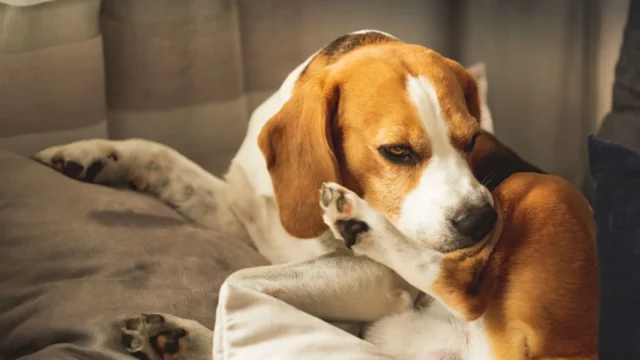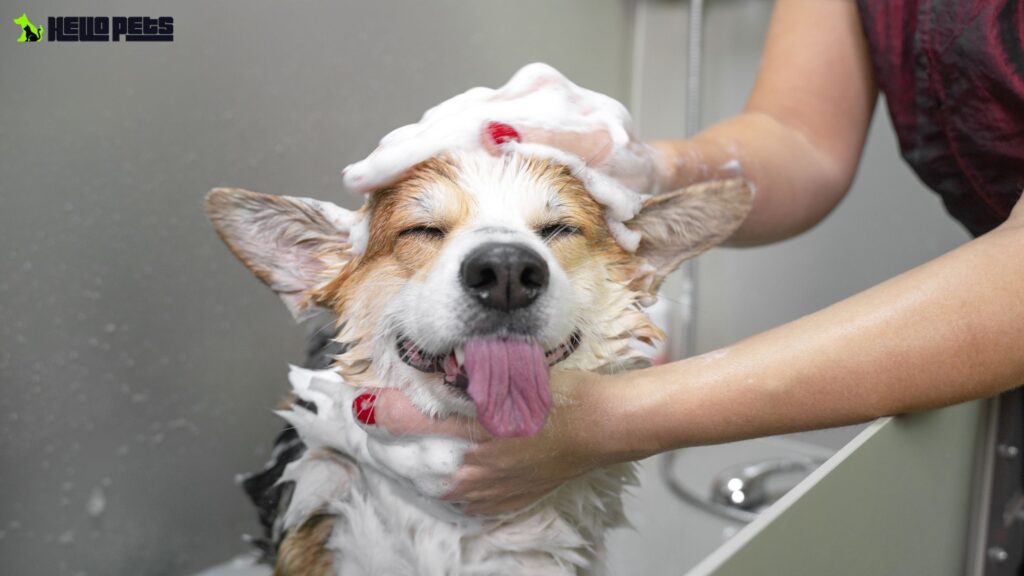Grooming is crucial in maintaining our furry friend's overall health and hygiene. However, it's common for dogs to experience itching and discomfort after grooming sessions. If you've recently groomed your furry friend and noticed that they are experiencing itching or discomfort, don't worry! It's not uncommon for dogs to feel itchy after grooming, but there are several steps you can take to provide relief and make your dog more comfortable. In this article, we'll explore some effective strategies to help alleviate dog itching after grooming.
""Need Dog Grooming in North York?"" Book now for a stress-free grooming experience!
5 Common Reasons For Dog Itching After Grooming
First, we will dive into some of the common reasons for dog itching after grooming.
1. Clipper Burn
Clipper burn is one of the primary reasons for your dog's itchiness after grooming. It occurs when the grooming clippers become too hot and irritate your dog's skin. It can happen if the clippers are used for an extended period or must be properly maintained. Clipper burns can cause redness, inflammation, and itchiness on your dog's skin.
To prevent clipper burn, ensure that the grooming clippers are well-lubricated and cooled regularly during the grooming process. Additionally, using clipper blades with appropriate sizes and avoiding excessive pressure can help minimize the risk of clipper burn.
2. Skin Irritations
Skin irritations can also contribute to your dog's post-grooming itchiness. Various factors can cause skin irritations, such as harsh grooming products, allergic reactions to certain ingredients, or even the accumulation of shampoo residue. Additionally, rough handling during grooming, including excessive brushing or tugging, can lead to skin irritations.
To alleviate skin irritations, opt for grooming products specifically formulated for dogs and labelled hypoallergenic. Avoid using human shampoos or products that contain harsh chemicals. Gentle and thorough rinsing during bathing can also help remove shampoo residue that might trigger itchiness.
3. Sensitive Skin
Some dogs have naturally sensitive skin, which makes them more prone to itching and irritation after grooming. Breeds with thin or delicate skin, such as the Bichon Frise or the Yorkshire Terrier, are often more susceptible to this issue.
If your dog has sensitive skin, take extra precautions during grooming. Use gentle grooming techniques, including soft brushing and careful handling. Opt for mild grooming products specifically designed for sensitive skin. It is also advisable to consult a professional groomer with experience with sensitive-skinned dogs.
4. Skin Infection from a Cut
During the pet grooming process, accidents can happen, and your dog may get a minor cut or abrasion. If the grooming equipment accidentally cuts the skin, it can increase the risk of bacterial or fungal infections. These infections can cause itchiness, redness, and discomfort for your dog.
If you notice any cuts or wounds after grooming, gently clean them with a pet-safe antiseptic solution and watch them for any signs of infection. If the area becomes swollen, pus-filled, or if your dog shows signs of pain, it is crucial to seek veterinary attention promptly.
5. Dog Skin Allergies Reaction
Another potential cause of post-grooming itchiness is dog skin allergies. Dogs can develop allergies to various substances, including grooming products, certain fabrics, or environmental factors. These allergies can trigger itchiness, redness, hives, and other discomfort.
If you suspect your dog is experiencing an allergy after grooming, it is essential to identify the allergen and eliminate it from your dog's environment. Switching to hypoallergenic grooming products, using natural fabrics for bedding, and keeping your dog away from known allergens can help alleviate the itching and prevent future reactions.
How to Relieve Dog Itching After Grooming

1. Rinse Thoroughly
After the dog grooming session, it's crucial to rinse your dog thoroughly to remove any residual shampoo or conditioner. Leftover grooming products can cause skin irritation and contribute to itching. Use lukewarm water and rinse all areas, especially to hard-to-reach spots like the belly and paws.
2. Choose the Right Shampoo and Conditioner
Opt for gentle and hypoallergenic shampoos and conditioners for dogs with sensitive skin. Harsh chemicals and fragrances in grooming products can aggravate your dog's skin, leading to itching and discomfort. Look for products labelled as soothing, moisturizing, or designed for dogs with allergies.
3. Moisturize the Skin
To soothe your dog's itchy skin, consider using a dog-friendly moisturizer or a specially formulated anti-itch spray. These products can provide relief by hydrating the skin and reducing irritation. Ensure the moisturizer or spray is free from harmful ingredients and safe for dogs to lick, as they may try to groom themselves after application.
4. Brush Regularly
Regular brushing is essential to keep your dog's coat healthy and prevent matting, which can contribute to itching. Brushing helps to remove loose hair, distribute natural oils, and stimulate the skin. It also allows you to inspect your dog's skin for any irritation, signs of redness, or fleas, which may be causing the itching.
5. Adjust the Grooming Tools
If your dog experiences itching after grooming, it's possible that the tools used during the session are causing irritation. Consider switching to a different type of brush or comb that is gentler on your dog's skin. Additionally, ensure that the grooming tools are clean and free from any residue that could trigger an allergic reaction.
6. Provide a Balanced Diet
A well-balanced diet is crucial in maintaining your dog's overall health, including its skin and coat condition. Ensure your dog's diet includes high-quality protein, essential fatty acids, and necessary vitamins and minerals. Consult your veterinarian to determine the most appropriate diet for your dog's needs.
7. Consult Your Veterinarian
If your dog's itching persists or worsens despite your efforts to relieve it, it's important to consult your veterinarian. They can examine your dog's skin, identify underlying issues, and recommend appropriate treatments or medications. Your veterinarian is the best resource to address your dog's health and well-being concerns.
Some Dog Itchy Skin Home Remedies: Say Goodbye to Fido's Irritation!
Here are sine natural solutions, which are safe and cost-effective, allowing you to provide the best care for your four-legged companion without breaking the bank.
1. Oatmeal Baths: Soothe the Itch
Oatmeal baths are an excellent way to relieve your dog's itchy skin. The soothing properties of oatmeal help to calm irritated skin and reduce itching. To prepare an oatmeal bath:
- Grind a cup of plain, unflavored oatmeal into a fine powder and mix it with warm water.
- Ensure the water is comfortably warm, but not hot, before gently bathing your dog.
- Allow your furry friend to soak in the oatmeal-infused water for 10-15 minutes, then rinse thoroughly.
- Repeat this process regularly to maintain healthy and itch-free skin.
2. Coconut Oil: Nature's Moisturizer
Coconut oil is a versatile remedy for various skin issues, including itchiness. Its natural moisturizing properties help hydrate the skin and alleviate dryness, reducing the urge to scratch. To use coconut oil:
- Gently massage a small amount onto your dog's skin, paying close attention to the affected areas.
- Leave it on for a few minutes to allow absorption, then rinse with lukewarm water.
- Repeat this process twice a week for best results, and you'll notice a significant improvement in your dog's skin condition.
3. Apple Cider Vinegar: A Soothing Tonic
Apple cider vinegar has been praised for its numerous health benefits, and it's no exception when it comes to relieving itchy skin in dogs. The vinegar's acidic nature helps to restore the skin's natural pH balance and soothe irritation. Dilute raw, unfiltered apple cider vinegar with equal water, then apply the solution to your dog's skin using a spray bottle or a clean cloth. Allow it to air dry, and remember to avoid any open wounds or sensitive areas. Repeat this process once or twice a week, and watch your furry friend find relief from their persistent itching.
4. Chamomile Tea: The Calming Elixir
Chamomile tea is a relaxing beverage for humans and a gentle and effective remedy for itchy skin in dogs. Brew a cup of chamomile tea using a teabag or dried flowers, and let it cool down completely. Once cooled, pour the tea into a spray bottle and spritz it onto your dog's irritated skin. The chamomile's anti-inflammatory properties will help reduce redness and itching, providing instant relief. Remember to avoid the eye area and any open wounds. Use this natural remedy whenever your furry friend needs a soothing touch.
5. Regular Grooming: Keep the Itch at Bay
Regular grooming is essential to keep your dog's skin healthy and itch-free. Brushing your dog's coat removes dead skin cells, loose fur, and external allergens that may contribute to itching. Additionally, it stimulates the production of natural oils, which keep the skin moisturized and prevent dryness. Make sure to use a suitable brush for your dog's coat type and be gentle to avoid causing any discomfort. Aim to groom your furry friend at least once a week to maintain their coat's health and minimize the chances of itching.
Conclusion:
Itchy skin can be a source of distress for both dogs and their owners. In conclusion, post-grooming itching in dogs can be distressing, but following these steps can help alleviate your furry friend's discomfort. Remember to rinse thoroughly, choose gentle grooming products, moisturize the skin, brush regularly, adjust grooming tools, provide a balanced diet, and seek veterinary advice if needed. Your dog can enjoy a comfortable and itch-free post-grooming experience with proper care and attention. You can also take advice from your dog groomer.
Remember, a happy and comfortable dog is a joyful companion by your side!









